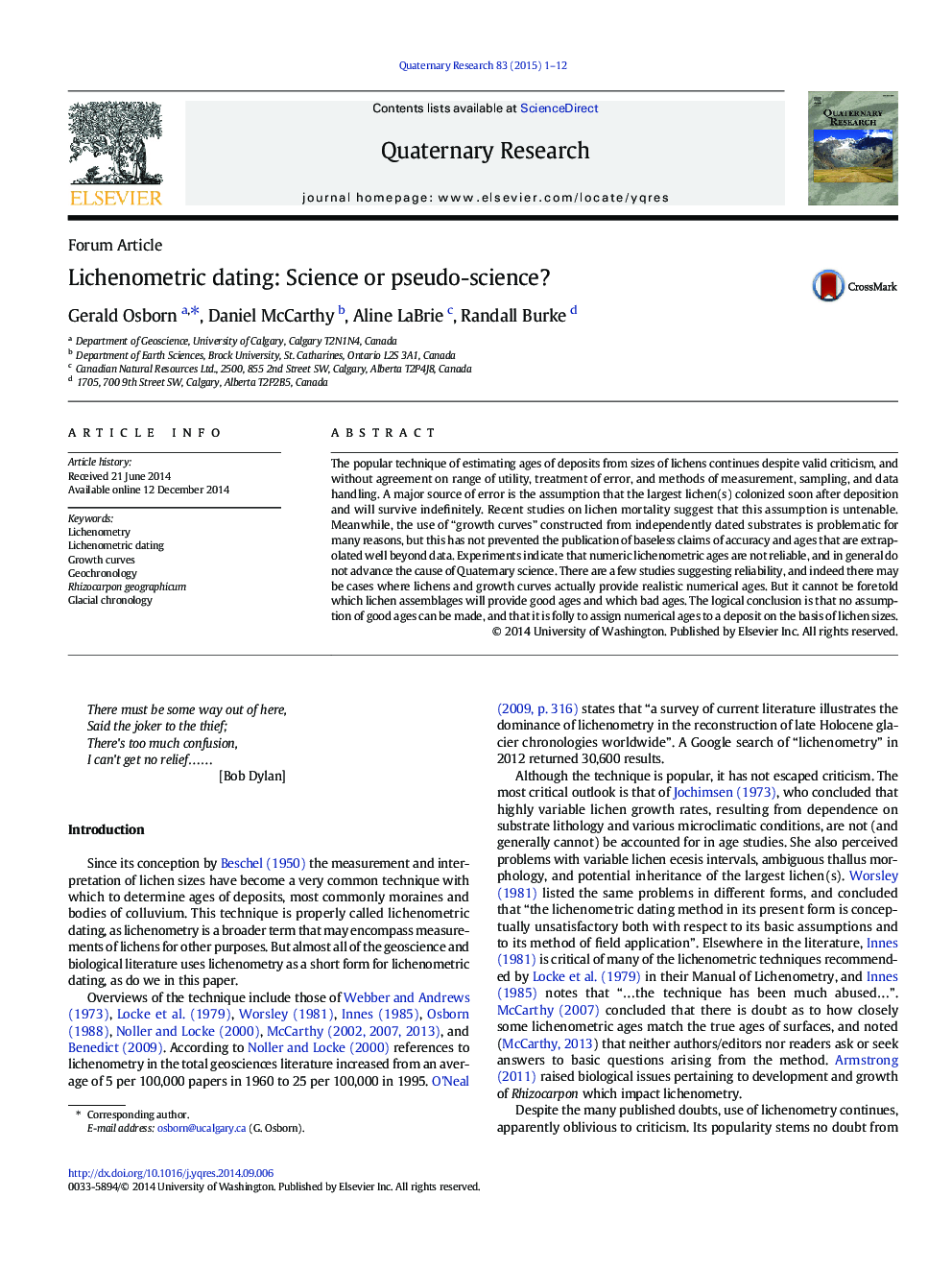| Article ID | Journal | Published Year | Pages | File Type |
|---|---|---|---|---|
| 1045177 | Quaternary Research | 2015 | 12 Pages |
The popular technique of estimating ages of deposits from sizes of lichens continues despite valid criticism, and without agreement on range of utility, treatment of error, and methods of measurement, sampling, and data handling. A major source of error is the assumption that the largest lichen(s) colonized soon after deposition and will survive indefinitely. Recent studies on lichen mortality suggest that this assumption is untenable. Meanwhile, the use of “growth curves” constructed from independently dated substrates is problematic for many reasons, but this has not prevented the publication of baseless claims of accuracy and ages that are extrapolated well beyond data. Experiments indicate that numeric lichenometric ages are not reliable, and in general do not advance the cause of Quaternary science. There are a few studies suggesting reliability, and indeed there may be cases where lichens and growth curves actually provide realistic numerical ages. But it cannot be foretold which lichen assemblages will provide good ages and which bad ages. The logical conclusion is that no assumption of good ages can be made, and that it is folly to assign numerical ages to a deposit on the basis of lichen sizes.
